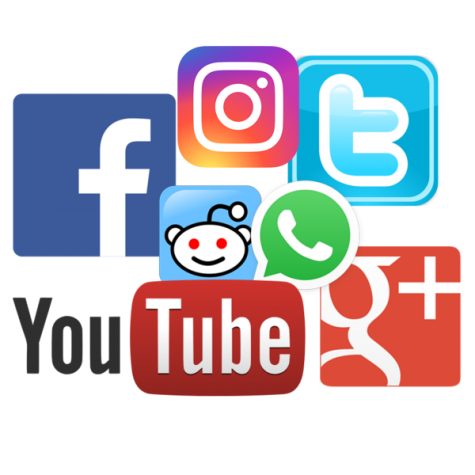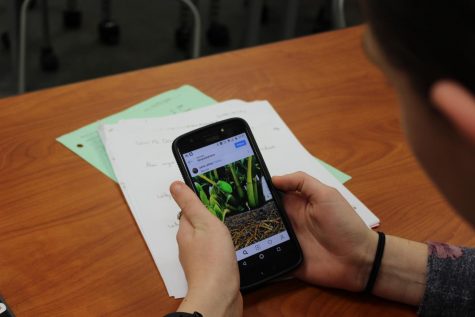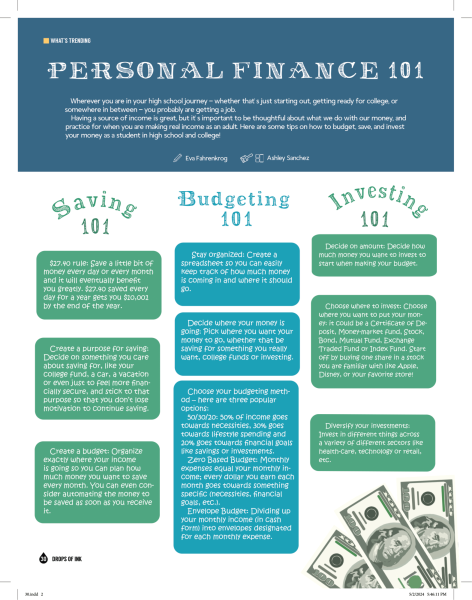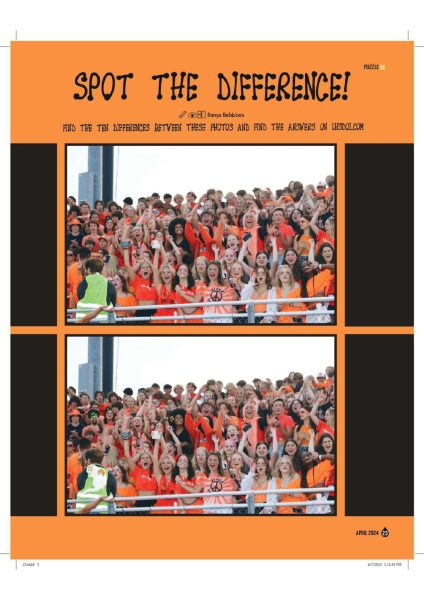ProcasTECHnation
You are just about to start working on your essay that is due tomorrow, but then you hear a buzz, and you see that @wildkoulentes_memes has shared a post on Instagram. You get sucked down the rabbit hole: scrolling on Instagram for hours on end, watching a funny TikTok, waiting for a Snapchat from your friend. Now, after all of that screen time, you have to pull an all-nighter to finish all the work you have due tomorrow.

In 2018, Common Sense Media found that 57 percent of teens were often distracted from homework, and 54 percent said they ignored their friends to pay attention to social media.
For a large portion of the teen population, this situation is a common, sometimes nightly, occurrence. That’s because on a daily basis inside and outside of school, most students spend hours on multitudes of devices. According to a Common Sense Media survey in 2017, the average teenager is on their phone for around seven hours a day.
This also stands true for many LHS students. While there are a myriad of media options that come with technology, students are using these options to put off their assignments, keep them from sleep or distract them during class.
According to AP Psychology and U.S. Government teacher Ms. Laura Brandt, technology addiction has not yet been added to the Diagnostic Statistical Manual of Mental Disorders (DSM), which is the handbook to officially diagnose mental health disorders, but it could possibly be added in the near future.
“There are great things about technology so to just say dismissing all of technology as being negative is not the way to do that,” Ms. Brandt said. “There’s a slippery slope. We know that people [who] spend more time on social media have higher rates of depression,” she added on why technology addiction will possibly be in the DSM.
Ms. Brandt also commented on students using their phones in class and remarked that it has increased over the years as new technology has arisen: “It’s safer to be on your phone, where you’re comfortable and not having to put yourself out there…Years ago, at the beginning of the class, people would always talk to each other…nobody talks to each other [now], and it’s a big difference.”
Studies have shown that students’ grades can be negatively impacted by the usage of non-school-related technology. For instance, a study done by The Journal of Educational Psychology in 2017 illustrated that students’ grades decrease with increased screen time in class. In the study, a group of college students were divided in half and one group was given a laptop and phone that they could use during class, while the other half was not given access to technology. On average, the group without technology ended up having a half letter grade higher than the group with technology.
Lily Bruns, a junior, states that she averages five hours of screen time per day. Most of her time after school is filled with social media apps like TikTok or Snapchat. She stated that she always tries to get her homework done at school because when she’s at home, she immediately pulls out her phone.
She emphasized the struggle of not being able to stop using her phone once she gets started. “It’s always buzzing. It’s like, ‘Oh, this person just sent me a Snapchat,’ and ‘This new person just texted me.’ Once it is opened up, I can’t get off of it,” she stated.
Some students may check their phone while studying or doing homework if they receive a notification, but Ms. Brandt explained the harm in stopping and starting again while studying. “It takes you a couple of minutes to get back to the task [you were previously doing]. Like, if you’re writing an English paper but then you check your emails or you check your text messages. Every time you switch tasks, it’ll take you three minutes to get back to the tasks you are doing,” she stated.
Similar to Bruns, sophomore Alex Campos has an average screen time of more than five hours a day and finds his phone to be a big distraction, along with his television. He explained that his reason for using technology other than his school Chromebook is usually “to relieve stress after school.”

A study by The Associated Press-NORC Center for Public Affairs Research found that 76 percent of teens between the ages of 13-17 use Instagram. Many of these students use their screen time for often unproductive reasons other than homework or studying.
Campos also emphasized that he doesn’t let his phone affect his grades but sometimes his sleep: “There will only be some days that I lose track of time, and I end up doing my homework until 2 in the morning.”
While Campos and Bruns are closer to the seven-hour daily screen time average, sophomore Ella Baffico uses her phone for about half of that time.
“I am involved in a lot of extracurriculars,” Baffico commented over email. “During school, I do not have a lunch period or a break to use my phone. When I am at home doing homework, I try to leave my phone in the kitchen so it is not a temptation. At my house, you can’t have electronics at any meal unless you need it for homework. In the car, I try not to use it because I prefer talking to my family and friends.”
Baffico also didn’t receive a phone until seventh grade and noted that most of her peers were getting them in fifth or sixth grade. The sophomore said she prioritizes her time with others instead of her technology: “Spending time together and living in the moment is more important than spending it in front of a screen.”










